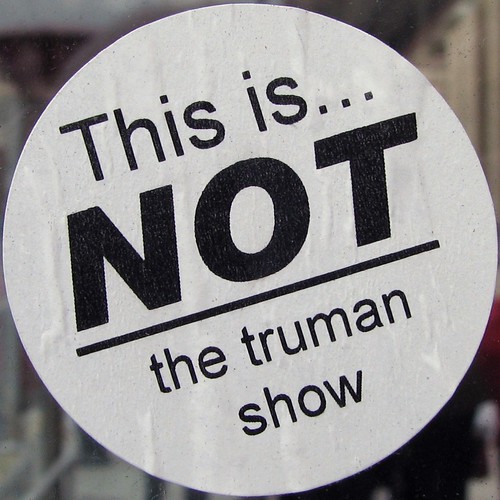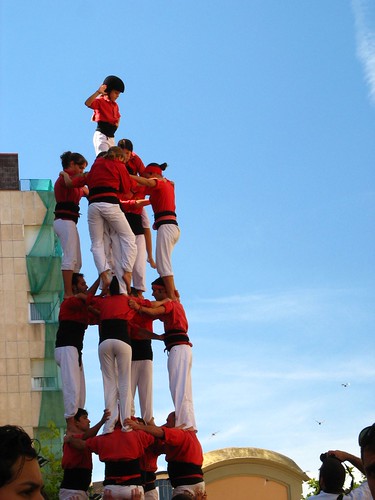For this course, a group of middle school teachers (Danielle, Heather, Caryn, and Wendy) worked on re-designing our Middle School Technology Acceptable Use Policy. So, can say with confidence that we have addressed several rules to promote online safety. Now our students can go on using the internet safely. Yeah Right!
How can we be sure that our students are safe online when we unaware of their safety in their regular school/social environment?
How can we prepare them for the potential risk of cyber bullying when bullying can go unnoticed in the hallway of our school?
How can we protect them from the various shape bullying could take (personal/physical, online, phone, etc.)?
And, who is responsible for teaching students about how to stay safe? EVERYONE!
Parents at home and educators in school need to help and support by educating them and raising awareness about their safety!
But we cannot be satisfied with having a policy written up somewhere on the agenda or in the computer lab. The AUP needs to be mentioned, referred to by ALL teachers in ALL classroom on a regular basis in different settings, so that the message really sinks in.
It is also important for the adults to stay informed about the new technologies and the potential risks that they represent.
In school, we should also teach students to be aware and watch out for themselves and others.
After all, they are the " in generation" who knows what's out there. So rather than being re-active to a case of bullying, we need to teach kids to be pro-active and take initiative to report any danger.
Monday, May 31, 2010
Monday, May 10, 2010
Copyright and Plagiarism
 Last weekend, I started to paint again. Here is a photo of my first work: What do you think?
Last weekend, I started to paint again. Here is a photo of my first work: What do you think? Of course this is not MY work, but Le nu bleu II de Henri Matisse.
Tonight, I learned Russian! I am pretty good, don't you think?
Я использовал интернет, чтобы перевести эту фразу на русском языке
Of course I don't speak Russian. The sentence above reads "I used the internet to translate this sentence into Russian."
What's my point?
We cannot plagiarize: use someone's work as our own.
So how can students complete research with respect to the laws of copyright and plagiarism?
For example, where can they find the images for a visual presentations ?
In my observation, it used to be that most students googled for images, copied and pasted it into their presentation. However, over the past 2 years, I have seen much more awareness and education in teaching students from our school to give credit for their resources. It will take a few more years to bring everyone (students, teachers, parents) on board, but I do believe that soon it will be an expected skill.
How can a student be sure that s/he is not breaking the international rules of copyrights?
1) Students should be aware of the school's Acceptable Use Policy with respect to the copyrights' law.
2) Encourage students to use the creative commons search engine for visual or audio resources. I have created a step by step use of Creative Commons* that can be presented to students on the first day of a project to teach them how to look for powerful pictures.
*Reference
Sunday, May 2, 2010
Privacy Online
Is there such a thing as privacy online?
Because new generations are considered "digital natives" does not mean that they understand the consequences of their actions. They are children after all! Parents and Educators must help students understand their Digital Footprint and take responsibility early on for what they chose to post publicly online.

Our immediate concern is directed at social networking sites where everyone exposes themselves or is just as easily exposed or "tagged" by others. However, it is important to regularly remind all the online -ers (facebookers, twitterers, bloggers, etc.) that we have a choice in what we do publicly, whether we do it in the middle of the cafeteria at recess or from the 'privacy' of our home computer. Once it's online, it's not yours!
For example, I think this short video carries a simple, but powerful message for middle and high school students:
Also, this article definitely pushed me to question privacy online: Beware: the Internet could own your future. We all need to be aware and help each other staying informed about the rules and stipulations on "privacy settings" as they are rapidly and regularly changing, yet not very well advertised.
However, playing the devil's advocate, I struggle with some of the "fears" out there. Should we be so cautious and careful about our every moves? Are we not inhibiting our creativity and expression by being so careful about our "public" image all the time. For example this article presents "your online reputation can hurt your job search".
Could your future boss really ask you to show your Facebook profile and make a judgment about your professional skills? Wouldn't a job interviewer be over stepping their rights? Am I just naive?
Because new generations are considered "digital natives" does not mean that they understand the consequences of their actions. They are children after all! Parents and Educators must help students understand their Digital Footprint and take responsibility early on for what they chose to post publicly online.

Our immediate concern is directed at social networking sites where everyone exposes themselves or is just as easily exposed or "tagged" by others. However, it is important to regularly remind all the online -ers (facebookers, twitterers, bloggers, etc.) that we have a choice in what we do publicly, whether we do it in the middle of the cafeteria at recess or from the 'privacy' of our home computer. Once it's online, it's not yours!
For example, I think this short video carries a simple, but powerful message for middle and high school students:
Also, this article definitely pushed me to question privacy online: Beware: the Internet could own your future. We all need to be aware and help each other staying informed about the rules and stipulations on "privacy settings" as they are rapidly and regularly changing, yet not very well advertised.
However, playing the devil's advocate, I struggle with some of the "fears" out there. Should we be so cautious and careful about our every moves? Are we not inhibiting our creativity and expression by being so careful about our "public" image all the time. For example this article presents "your online reputation can hurt your job search".
Could your future boss really ask you to show your Facebook profile and make a judgment about your professional skills? Wouldn't a job interviewer be over stepping their rights? Am I just naive?

Saturday, May 1, 2010
The Digital Footprint and It's Shadow
When and where should we be teaching students about their digital footprint?
Before answering this question, I would be interested to ask some students at various levels (elementary, middle, high school) if they know and understand what Digital Footprint is.
I used the online Digital Footprint Calculator to calculate my approximate personal footprint: In this article, Sara Perez simply defines Digital Footprint as "your social network profiles, your web site or blog, your photos shared on an online service, videos you uploaded to YouTube, perhaps even mentions of you in the local paper or your school's web site...."
In this article, Sara Perez simply defines Digital Footprint as "your social network profiles, your web site or blog, your photos shared on an online service, videos you uploaded to YouTube, perhaps even mentions of you in the local paper or your school's web site...."
Considering this definition, it is safe to say that most of our students from Kindergarden through 12th grades contribute regularly to their personal Digital Footprint. Therefore I would support the idea that it's never too early present the "reality" of what it means to be active online, especially considering our technology expectations for them.
There can be positive feedback in one's contribution to the digital footprint: For example you were recognized internationally for your humanities' class blog entries. Or the language teacher in your new school views your online Spanish portfolio from your previous school and uses it as your placement into the next level.
However, Sara Perez also addresses the digital shadow, explaining in her articles that if we are active in creating our digital footprint, our Digital shadow, "... images of you on a surveillance camera, your bank records, your retail and airline purchase records, your telephone records, your medical database entries, copies of hospital scans, information about your web searches, general backup data, information about credit card purchases, etc." is being created indirectly through our actions online. We definitely have less control over our Digital Shadow, which is one more supportive argument to bring awareness to students as early and often as possible.
shadow, explaining in her articles that if we are active in creating our digital footprint, our Digital shadow, "... images of you on a surveillance camera, your bank records, your retail and airline purchase records, your telephone records, your medical database entries, copies of hospital scans, information about your web searches, general backup data, information about credit card purchases, etc." is being created indirectly through our actions online. We definitely have less control over our Digital Shadow, which is one more supportive argument to bring awareness to students as early and often as possible.
Photo Credit: North Sea (Sankt Peter Ording) Germany by Paraflyer
Before answering this question, I would be interested to ask some students at various levels (elementary, middle, high school) if they know and understand what Digital Footprint is.
I used the online Digital Footprint Calculator to calculate my approximate personal footprint:
 In this article, Sara Perez simply defines Digital Footprint as "your social network profiles, your web site or blog, your photos shared on an online service, videos you uploaded to YouTube, perhaps even mentions of you in the local paper or your school's web site...."
In this article, Sara Perez simply defines Digital Footprint as "your social network profiles, your web site or blog, your photos shared on an online service, videos you uploaded to YouTube, perhaps even mentions of you in the local paper or your school's web site...."Considering this definition, it is safe to say that most of our students from Kindergarden through 12th grades contribute regularly to their personal Digital Footprint. Therefore I would support the idea that it's never too early present the "reality" of what it means to be active online, especially considering our technology expectations for them.
There can be positive feedback in one's contribution to the digital footprint: For example you were recognized internationally for your humanities' class blog entries. Or the language teacher in your new school views your online Spanish portfolio from your previous school and uses it as your placement into the next level.
However, Sara Perez also addresses the digital
 shadow, explaining in her articles that if we are active in creating our digital footprint, our Digital shadow, "... images of you on a surveillance camera, your bank records, your retail and airline purchase records, your telephone records, your medical database entries, copies of hospital scans, information about your web searches, general backup data, information about credit card purchases, etc." is being created indirectly through our actions online. We definitely have less control over our Digital Shadow, which is one more supportive argument to bring awareness to students as early and often as possible.
shadow, explaining in her articles that if we are active in creating our digital footprint, our Digital shadow, "... images of you on a surveillance camera, your bank records, your retail and airline purchase records, your telephone records, your medical database entries, copies of hospital scans, information about your web searches, general backup data, information about credit card purchases, etc." is being created indirectly through our actions online. We definitely have less control over our Digital Shadow, which is one more supportive argument to bring awareness to students as early and often as possible.Photo Credit: North Sea (Sankt Peter Ording) Germany by Paraflyer
Subscribe to:
Posts (Atom)

